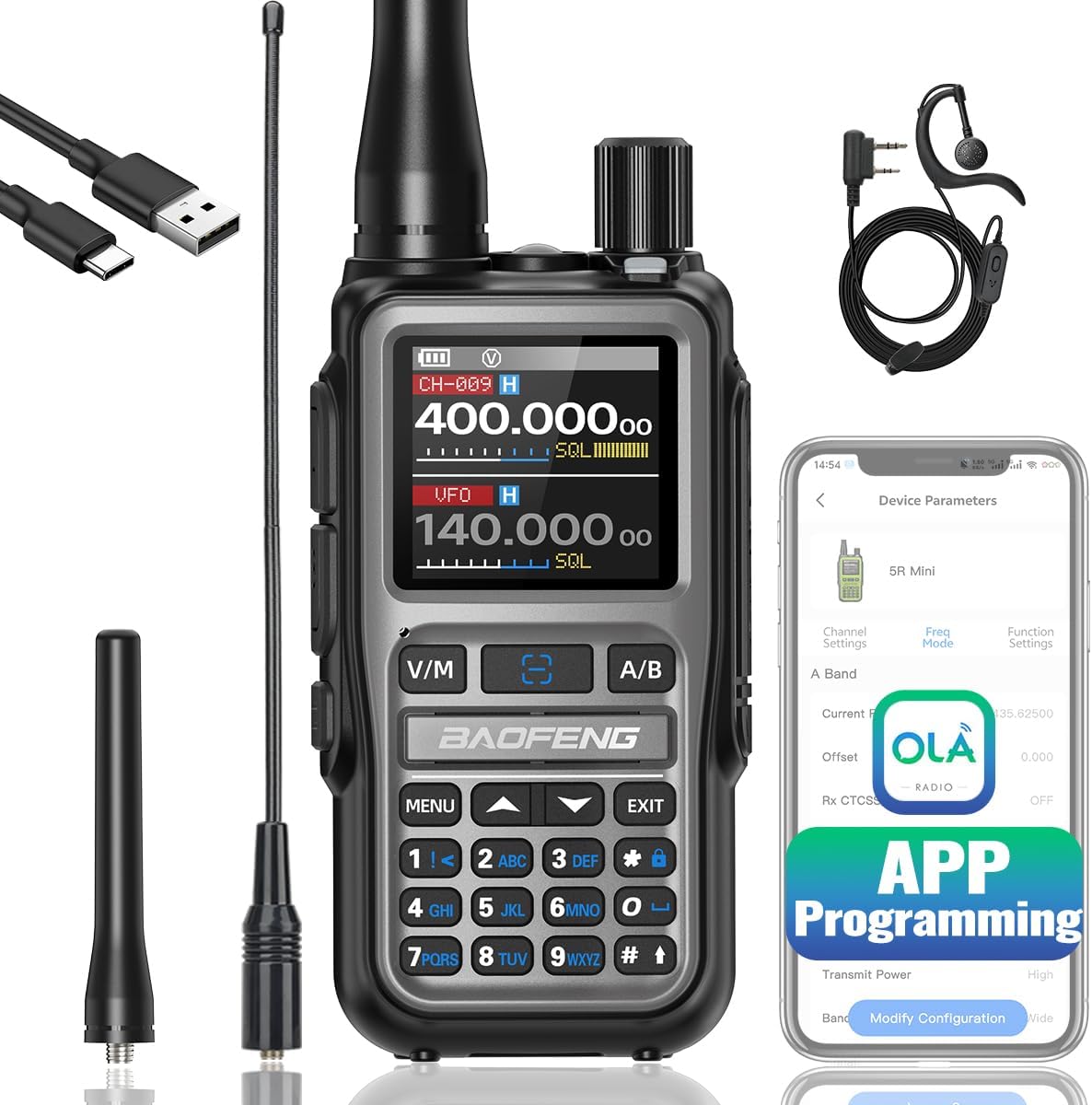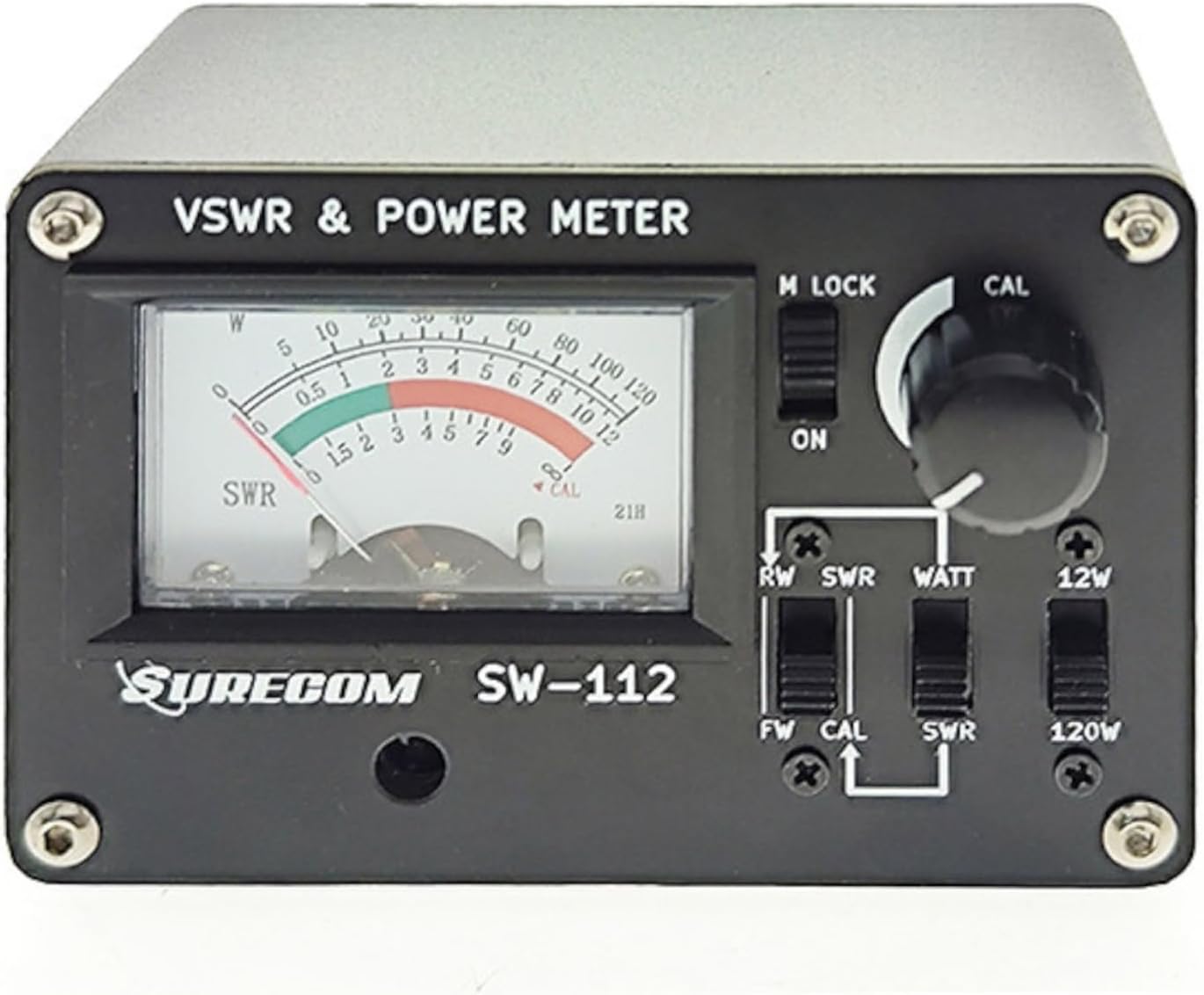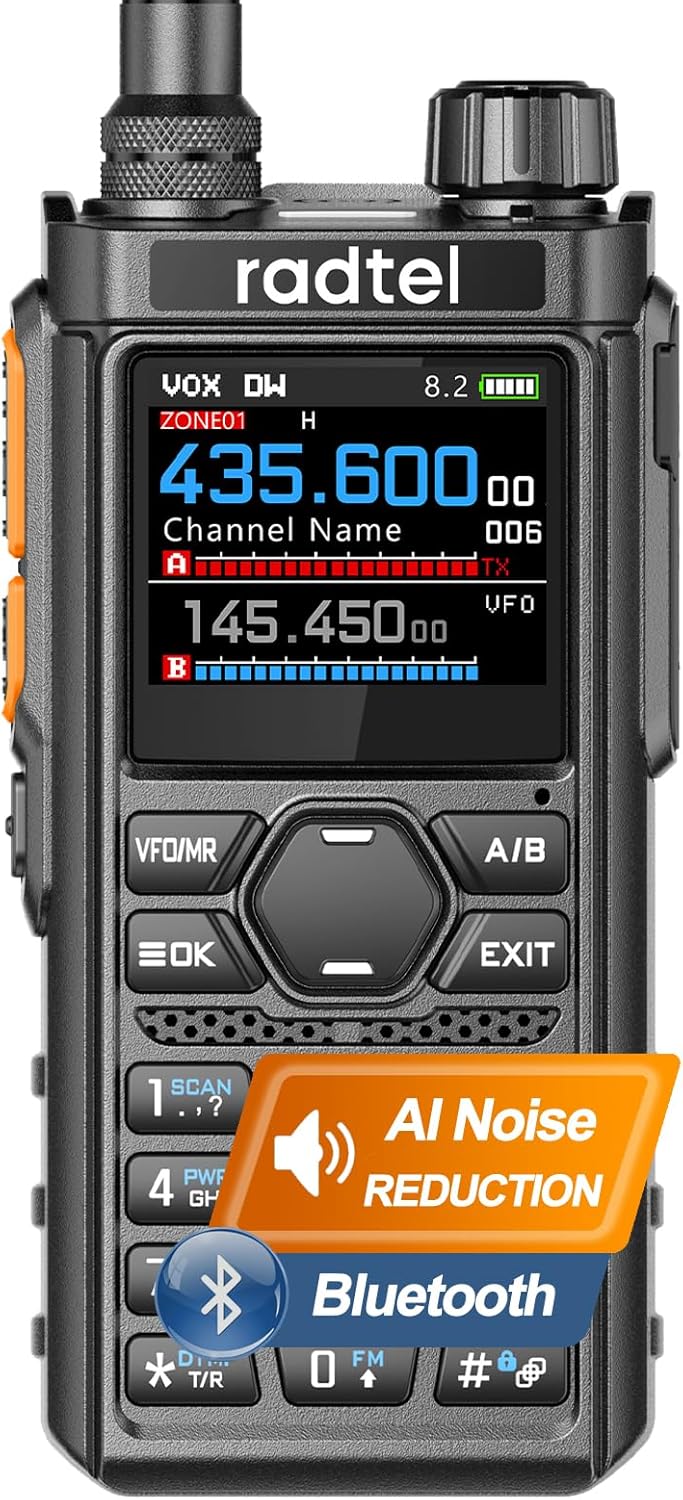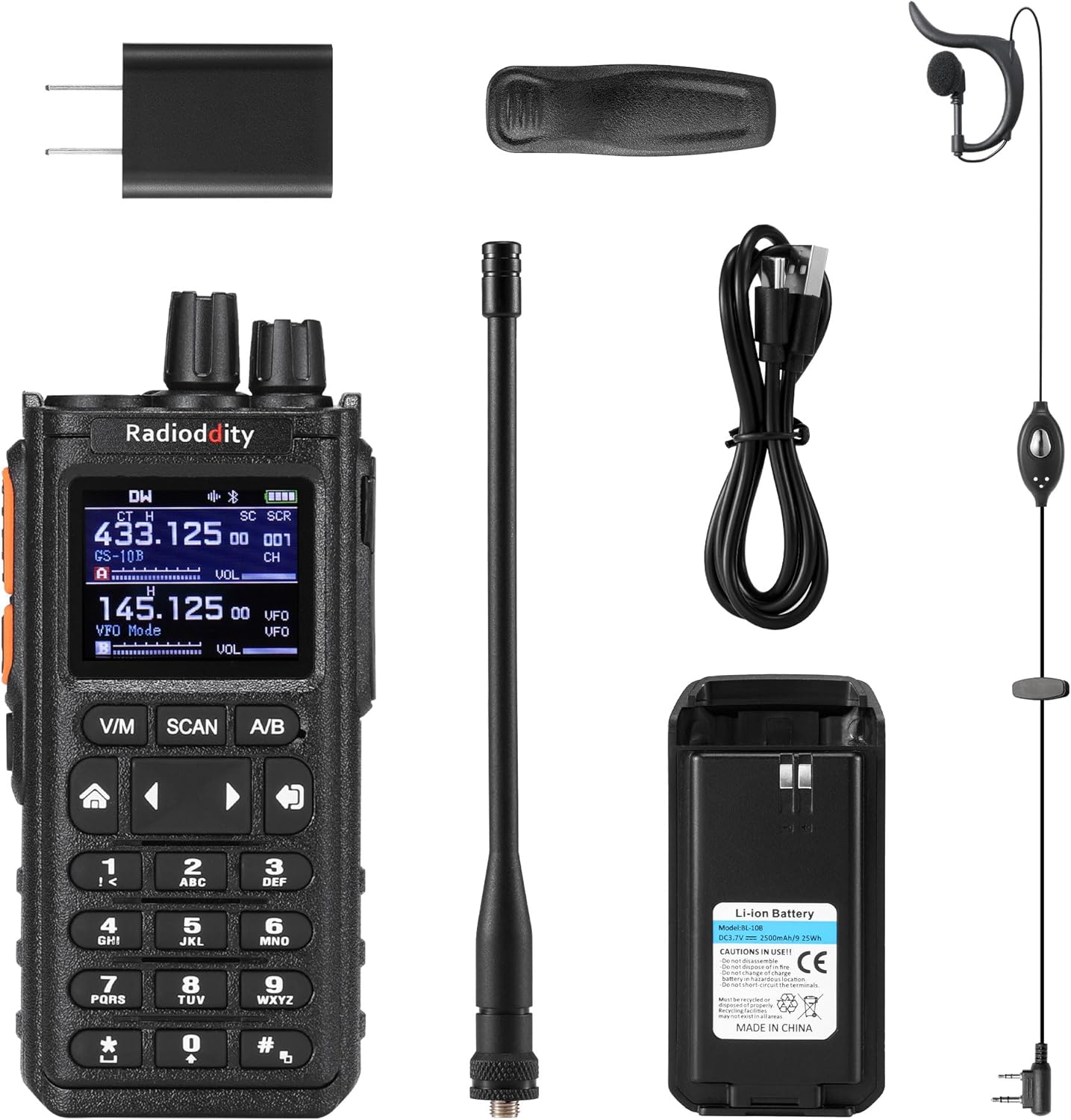
The Belfone Dual Band Digital Ham Radio is a versatile and rugged handheld transceiver designed to meet the needs of amateur radio enthusiasts, outdoor adventurers, and emergency preparedness users. Boasting an extensive set of features including 4000 channels, GPS with APRS support, NOAA weather alerts, IP54 water and dust resistance, Bluetooth 5.5 connectivity, and a long-lasting 21-hour battery life, this radio positions itself as a capable all-around communicator. In this review, we will examine its design, performance, features, ease of use, and whether it delivers real value for its intended audience.
Design and Build Quality
Right from unboxing, the Belfone Dual Band radio feels substantial and thoughtfully engineered. Its housing is solid, with textured grips that make it easy to hold even with gloves on or in wet conditions. The IP54 rating means it is protected against limited dust ingress and splashing water, which suits typical outdoor scenarios like hiking or camping. The buttons and knobs are tactile and responsive, and the display is clear with adjustable backlighting for low light use.
Despite its robust feel, the radio remains comfortable to carry for extended periods. The belt clip is sturdy and well-integrated, though some users might prefer an optional wrist strap or harness for more active pursuits. Overall, this radio strikes a good balance between durability and portability.
Display and Interface
The interface on the Belfone radio is intuitive for anyone familiar with handheld transceivers, and reasonably accessible for newcomers with some basic instruction. The screen presents essential information in a readable layout, including frequency, channel, signal strength, battery status, and GPS data when enabled. Menu navigation is straightforward, with logical groupings for settings, scanning, memory channels, and alerts.
The inclusion of customizable function keys is a welcome touch, allowing frequent actions like toggling APRS, initiating a scan, or activating NOAA weather channels without diving deep into menus.
Performance and Reception
On the air, the Belfone Dual Band performs admirably. With support for both VHF and UHF bands, it covers the most commonly used amateur radio frequencies, giving users flexibility for local communication. The receiver is sensitive and clear, with good selectivity that helps reduce interference in crowded radio environments. Transmission power is adequate for typical line-of-sight communication, which is what most handheld users rely on during outdoor activities or local emergency nets.
The 4000 channel capacity provides ample storage for repeaters, simplex channels, weather frequencies, and personalized allocations. Channel programming can be done directly on the radio or via compatible software, a feature enthusiasts will appreciate for organizing and backing up their configurations.
GPS and APRS Capabilities
One of the standout features of this model is its integrated GPS with APRS (Automatic Packet Reporting System). This allows the radio to share real-time position data with other APRS users, which is particularly useful for group hikes, search and rescue operations, or community events. The GPS locks fairly quickly in open environments and maintains a stable fix, enabling reliable tracking and location reporting.
For APRS operation, the display shows relevant data such as coordinates and path settings, and the radio can be configured to send periodic position reports. While APRS implementation on handhelds is never as full-featured as dedicated systems, Belfone’s integration is solid and useful for users who want position awareness without extra devices.
NOAA Weather Alerts
Safety is a priority for outdoor users, and Belfone’s inclusion of NOAA weather alert reception is a valuable feature. The radio can monitor weather channels and automatically alert you to severe weather warnings or watches in your area. This function works quietly in the background and can be a lifesaver when conditions change unexpectedly on a trail or remote campsite.
The weather channel list is easy to update, and the alerts are loud and unambiguous, ensuring you won’t miss important notifications.
Bluetooth 5.5 Connectivity
Bluetooth 5.5 support is another modern touch that separates this radio from more basic models. While Bluetooth on handheld transceivers is still a developing area, this implementation allows for wireless audio accessories, making it easier to use headsets or earpieces without cables in active situations. Pairing is straightforward, and the connection remains stable within typical line-of-sight distances.
This feature enhances user convenience, especially for prolonged use where wired headsets can become cumbersome.
Battery Life and Power Management
Battery life is an area where the Belfone Dual Band really shines. With a 21-hour rated battery life under typical usage, it can comfortably last multiple days of intermittent use without needing a recharge. Even with GPS and Bluetooth enabled, the power management is efficient, and the device will easily carry you through long hikes or multi-day excursions.
Charging is handled via a standard USB port, which adds convenience since users can top up the battery with power banks, solar chargers, or vehicle adapters. Spare batteries are also an option for extended trips where charging opportunities are limited.
Ease of Use and Programming
For new ham operators, the learning curve for handheld radios can be moderate, but Belfone’s design makes it approachable. The manual is clear and helps users get on the air quickly. Menu labels are sensible, and most common actions require only a few button presses.
For more advanced users who want to program dozens or hundreds of channels, software programming via a computer becomes invaluable. The radio supports this, and once set up, it streamlines managing channel lists, setting tones, and labeling memories.
Who Is This Radio Best For
The Belfone Dual Band Digital Ham Radio is an excellent choice for a range of users. Outdoor enthusiasts and hikers will appreciate its rugged design, GPS tracking with APRS, long battery life, and weather alerts. Amateur radio hobbyists will find the dual band performance, extensive channel memory, and programming flexibility satisfying for local communications and nets. Emergency preparedness users will value having a dependable, feature-rich communication tool that works independently of cellular networks.
It may be more feature-rich than what a casual user strictly wants, but for anyone serious about reliable communication in varied environments, it delivers strong performance and versatility.
Conclusion
In a crowded field of handheld ham radios, the Belfone Dual Band Digital stands out by combining robust construction, thoughtful features, and modern connectivity in one package. Its comprehensive feature set makes it suitable for outdoor adventure, daily amateur radio use, and emergency preparedness. With solid performance across reception, GPS/APRS functionality, weather alerts, Bluetooth support, and battery life, it offers excellent value and reliability. Whether you are a seasoned operator or gearing up for your first off-grid excursion, this radio is a capable companion that won’t leave you wanting.










